Orion's Belt - Η ζώνη του Ωρίωνα
Orion's Belt - Η ζώνη του Ωρίωνα,
Messier42, Horsehead, Flame
Στην Αστρονομία η ζώνη του Ωρίωνα αποτελείται από τρεις αστέρες του αστερισμού του Ωρίωνα. Πρόκειται για τους αστέρες δευτέρου βαθμού δ του Ωρίωνα, ε του Ωρίωνα, και ζ του Ωρίωνα, που φέρονται, ως ζωστήρας του μυθικού ήρωα, σε ευθεία γραμμή μέσα στο τετράπλευρο του αστερισμού και σχεδόν κατά μήκος προς τον ουράνιο ισημερινό.
Οι αστέρες αυτοί είναι επίσης γνωστοί και με τα ονόματα "Τρεις Βασιλείς", "Τρεις Μάγοι", "Πήχυς", και "Ράβδος του Ααρών" ή "Ράβδος του Ιακώβ". Το 1827 το Πανεπιστήμιο της Λειψίας προκειμένου να τιμήσει τον Μέγα Ναπολέοντα ονόμασε τους αστέρες αυτούς "Ράβδο του Ναπολέοντα", πλην όμως η ονομασία αυτή δεν επεκράτησε. Επίσης, οι αστέρες είναι γνωστοί και με την ονομασία Τελαμών.
Κείμενο Wikipedia http://en.wikipedia.org/wiki/Orion%27s_Belt
Orion's Belt or the Belt of Orion is an asterism in the constellation Orion. It consists of the three bright stars Alnitak, Alnilam and Mintaka.
Looking for Orion's Belt in the night sky is the easiest way to locate the constellation Orion in the sky. The stars are more or less evenly spaced in a straight line, and so can be visualized as the belt of the hunter's clothing. In the Northern hemisphere, they are best visible in the early night sky during the winter, in particular the month of January at around 9.00 pm
Alnitak
Alnitak is pronounced: ALL-nit-ahk. Orion is a constellation of its own, but its also held inside another constellation. Alnitak is a triple star system at the eastern end of Orion's belt, and is 736 light years from the earth. It has 100,000 times the luminosity of the sun. The primary (Alnitak A) is itself a close binary, comprising Alnitak Aa (a blue supergiant of spectral and luminosity type O9.7 Ibe, with an absolute magnitude of -5.25 and an apparent magnitude of 2.0) and Alnitak Ab (a blue dwarf of spectral and luminosity type O9V, with an absolute magnitude of about -3.0 and an apparent magnitude of about 4, discovered in 1998 [2]). Aa is estimated as being up to 28 times as massive as the sun, and to have a diameter 20 times greater.[3] It is the brightest star of class O in the night sky. Alnitak B is a 4th magnitude B-type star which orbits Alnitak A every 1500 years. A fourth star, 9th magnitude Alnitak C, has not been confirmed to be part of the Aa-Ab-B group, and may simply lie along the line of sight.
The Alnitak system is bathed in the nebulosity of IC 434.
Alnilam
Alnilam (Epsilon Orionis) is approximately 1340 light years away from earth and shines with magnitude 1.70. Considering ultraviolet light Alnilam is 375,000 times more luminous than the Sun.[2] It is a large blue supergiant star in the constellation of Orion. Its Flamsteed designation is 46 Orionis.
It is the 30th brightest star in the sky (the 4th brightest in Orion) and is a blue-white supergiant. Together with Mintaka and Alnitak, the three stars make up the belt of Orion, known by many names across many ancient cultures. Alnilam is the middle star.
Since 1943, the spectrum of this star has served as one of the stable anchor points by which other stars are classified.[1] It is also one of the 57 stars used in celestial navigation. It is at its highest point in the sky around midnight on December 15.
Alnilam's relatively simple spectrum has made it useful for studying the interstellar medium. Within the next million years, this star may turn into a red supergiant and explode as a supernova. It is surrounded by a molecular cloud, NGC 1990, which it brightens to make a reflection nebula. Its stellar winds may reach up to 2000 km/s, causing it to lose mass about 20 million times more rapidly than the Sun.
Mintaka
Pronounced MIN-ta-ka. Mintaka (Delta Orionis) is 915 light years away and shines with magnitude 2.21. Mintaka is 90,000 times more luminous than the Sun. Mintaka is a double star. Both stars orbit around each other every 5.73 days
Canon eos 40D Full Spectra
EF 100mm IS Usm L
F2.8
iso400
70X180sec
Deepskystacker, Photoshop

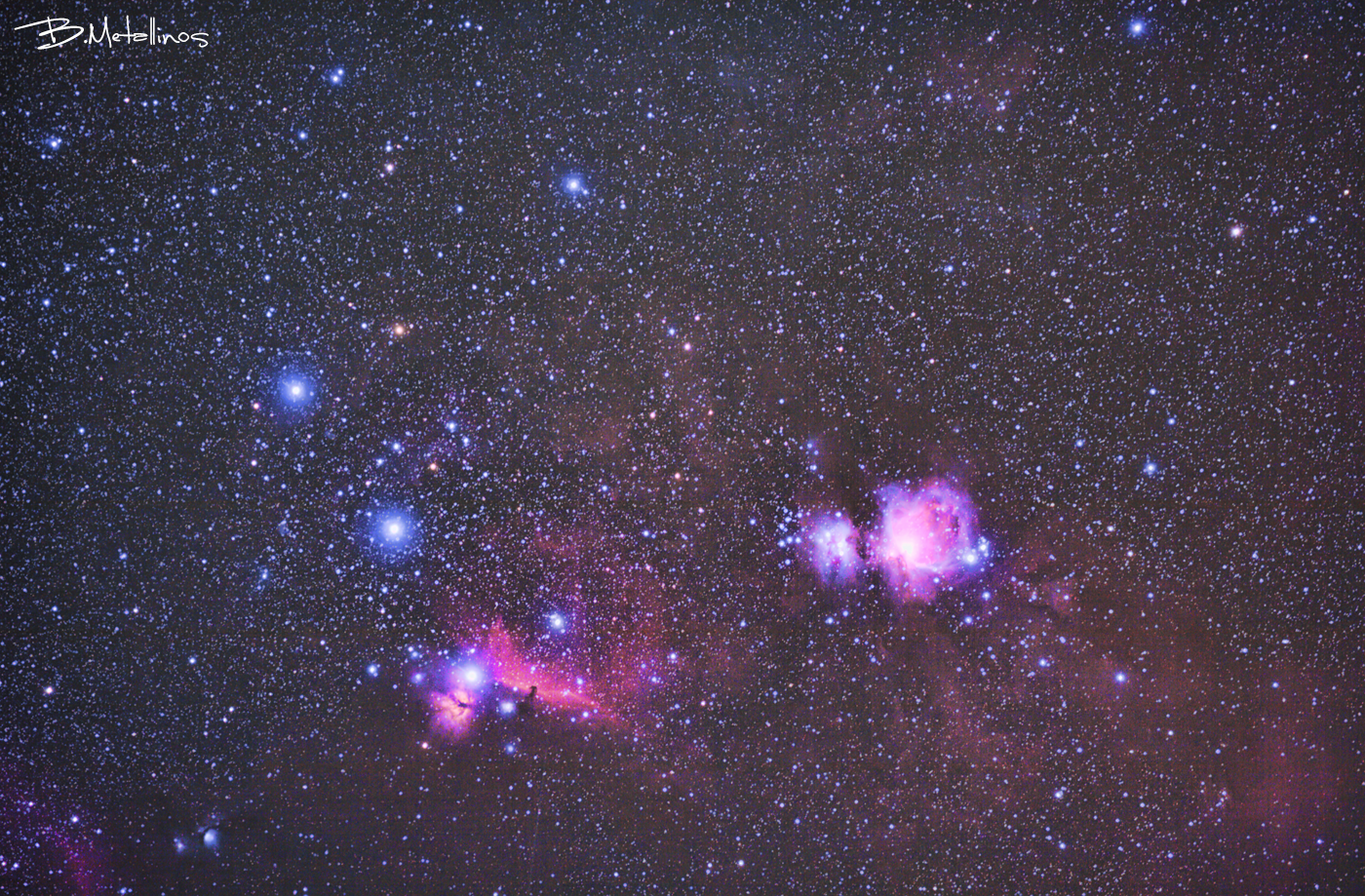
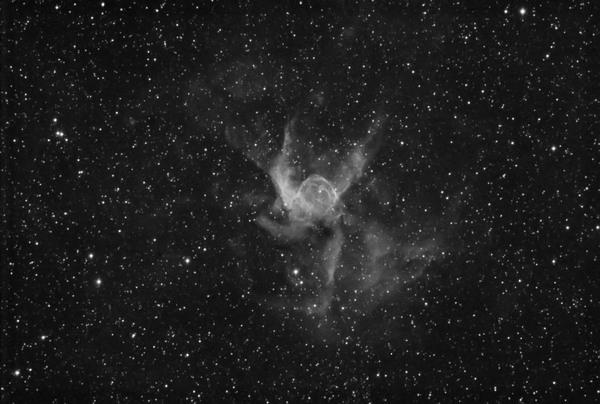
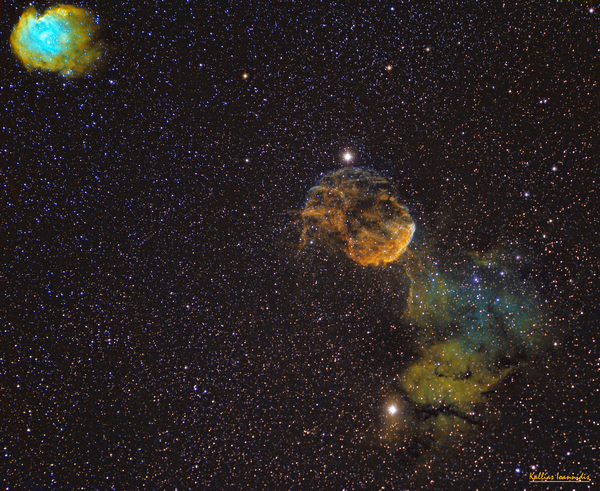
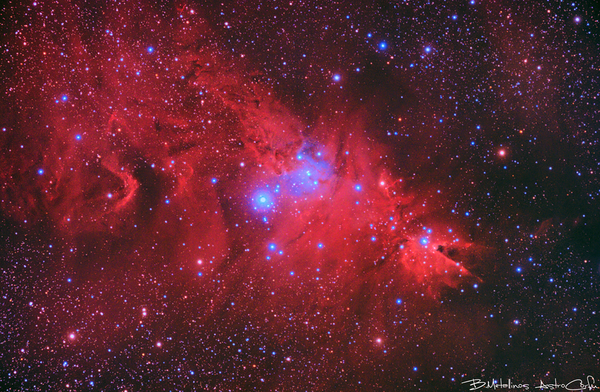
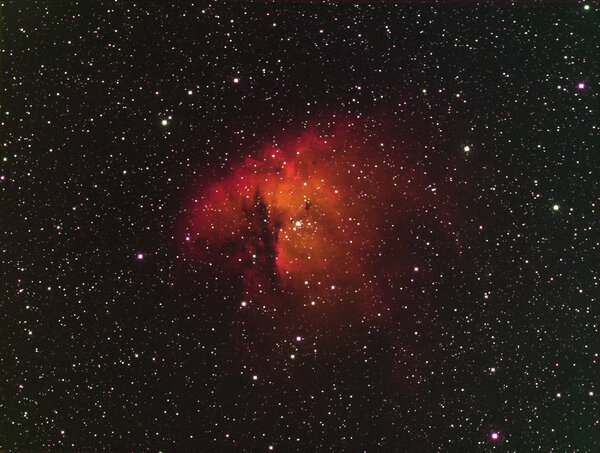
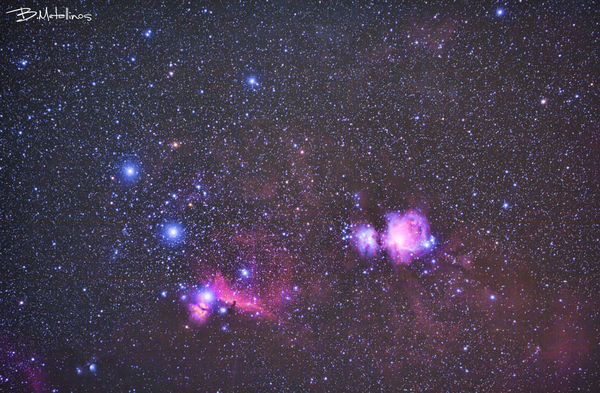
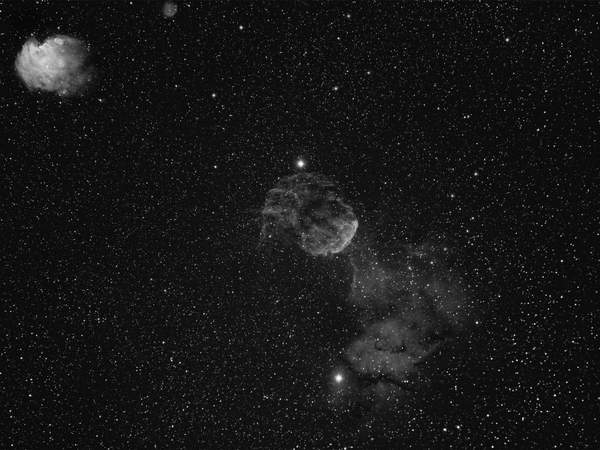
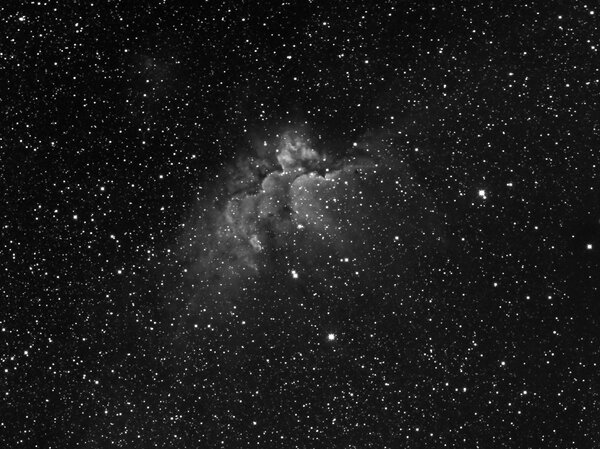
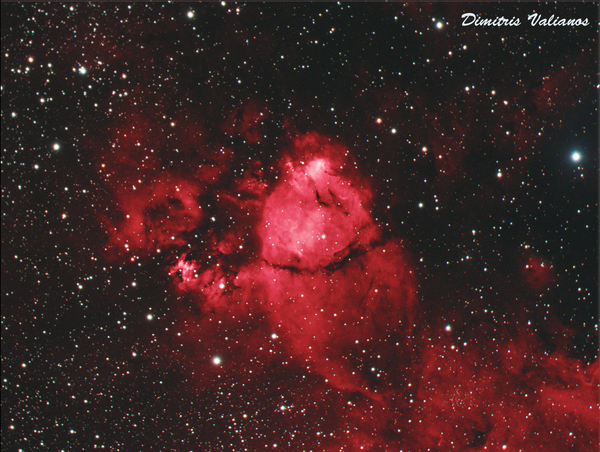
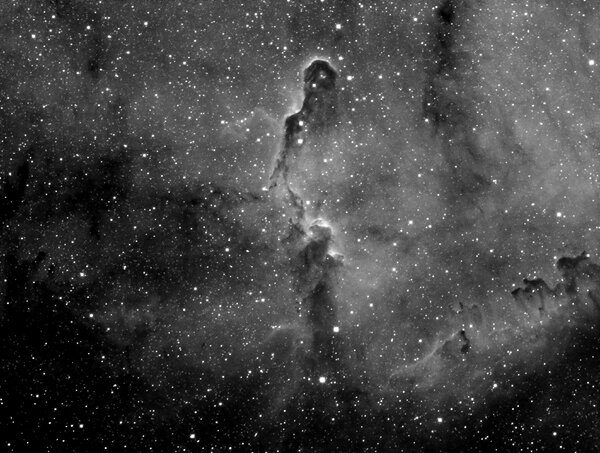

Προτεινόμενα σχόλια
Δημιουργήστε έναν λογαριασμό ή συνδεθείτε για να σχολιάσετε
Πρέπει να είσαι μέλος για να αφήσεις ένα σχόλιο
Δημιουργία λογαριασμού
Εγγραφείτε για έναν νέο λογαριασμό στην κοινότητά μας. Είναι εύκολο!.
Εγγραφή νέου λογαριασμούΣυνδεθείτε
Έχετε ήδη λογαριασμό? Συνδεθείτε εδώ.
Συνδεθείτε τώρα